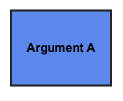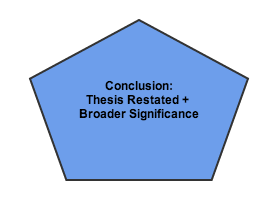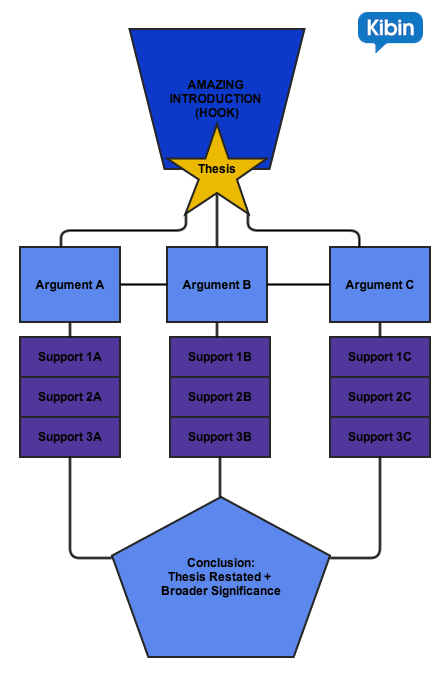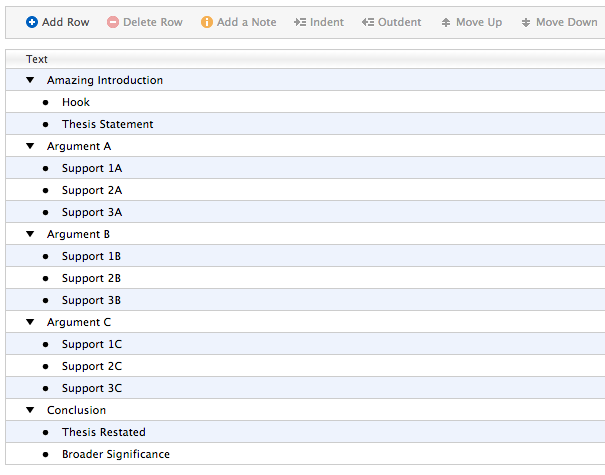Have you ever made an awesome chocolate cake without looking at a recipe first? Unless you are an extremely talented baker, most likely the answer is “no.” Just one cup of flour too many and your chocolate dessert will be a chocolate mess!
The same goes for writing a 5-paragraph essay. If you are an extremely talented writer, you may be able to intuitively create a compelling essay with all the components needed to be both persuasive and easy to swallow…or follow.
However, if writing doesn’t come easily to you, you can benefit from creating a 5-paragraph essay outline before jumping into your writing assignment. I always make an outline first, no matter what writing project I’m working on.
There are endless, different ways to write a compelling essay. But, if your teacher is demanding that you sum up your argument in five succinct paragraphs, follow this easy tutorial on how to create a 5-paragraph essay outline.
Structure of the 5-Paragraph Essay Outline
The 5-paragraph essay is made of…you guessed it…five paragraphs. Each paragraph serves a specific purpose:
- Paragraph 1: Amazing introduction (hook) and the all-important thesis statement
- Paragraph 2: Argument A and supporting facts or quotes
- Paragraph 3: Argument B and supporting facts or quotes
- Paragraph 4: Argument C and supporting facts or quotes
- Paragraph 5: Conclusion, made up of your restated thesis and the broader significance of your argument
Here’s how this outline would look if you sketched it out:
A Note on Formatting Your 5-Paragraph Essay Outline
Now, I’m not saying that you must put your outline into a diagram like the one above—using a simple pen and paper or word processor will suffice. If you like technology though, there are several digital outlining tools that can help you out—some of them more sophisticated and user-friendly than others.
It’s not really about making a perfect 5-paragraph essay outline, rather, it’s about developing an outline that makes the most sense to you. An outline ensures that you have the necessary components to write an awesome essay.
Without further delay, let’s jump into more detail about each of the outline components.
Step One: Identify Your Topic
First we need a topic. Typically, your instructor will give you a subject to write about, or at least parameters for a topic. Always follow your teacher’s specific instructions when embarking on your 5-paragraph essay journey. After all, you don’t want the wrath of your instructor to come down upon you for completely ignoring instructions.
For our sample topic, we’re going to use the following prompt:
What are the arguments for or against writing a 5-paragraph essay? Should teachers continue requesting this writing method from students?
Step Two: Take a Stance on Your Topic
We need to take a stance for or against teachers asking students to write 5-paragraph essays, so we can argue for or against it in our thesis statement.
Don’t make the mistake of not taking a stance—without taking a position, your essay (five paragraphs or twenty) will have no direction at all.
When deciding on your position, you have to choose one that can be backed with valid and supportable arguments, either from your research or from the course materials provided in your class.
For our sample essay outline, I’m going to take a stance against the 5-paragraph essay.
Step Three: Write a Clear Thesis Statement
Based on my chosen stance against 5-paragraph essays, my thesis statement will be “Teachers should stop teaching students to write 5-paragraph essays.”
Notice the word “should” in the thesis statement? More power can be added to your position by creating a statement about what should or shouldn’t be done. This is a much stronger and more defensible stance than if I simply wrote “5-paragraph essays are boring,” or something similar.
Step Four: Develop Three Arguments to Underscore Your Thesis
Now you need to come up with three arguments that will back your thesis statement. Here are mine:



Step Five: Develop Three Supports for Each of Your Arguments
 Your evidence, or supports, should include facts, quotes, and data that substantiate your thesis. This is a great place to include quotes directly from your research sources.
Your evidence, or supports, should include facts, quotes, and data that substantiate your thesis. This is a great place to include quotes directly from your research sources.
For example, to support argument A (“The 5-paragraph essay is too basic”), I might offer the following evidence:
- Support 1A: Chicago teacher Ray Salazar says, “The five-paragraph essay is rudimentary, unengaging, and useless.”
- Support 2A: Elizabeth Guzik of California State University, Long Beach says, “The five paragraph essay encourages students to engage only on the surface level without attaining the level of cogency demanded by college writing.”
Similarly, in regards to argument C (“The 5-paragraph essay does not allow for analytical thinking, rather, it confines students to following a restrictive formula”), I might support it with this quote:
- Support 1C: According to an article in Education Week, “There is a consensus among college writing professors that ‘students are coming [to college] prepared to do five-paragraph themes and arguments but [are] radically unprepared in thinking analytically.’”
Remember, for the 5-paragraph essay structure, you typically need to come up with three supports for each of your three arguments. In our example, I only show three of the total nine supports needed to round out the argument.
Step Six: Develop Your Intro Hook
 Once you have your thesis and arguments sorted, you can work on developing your introduction. (*Hint* it’s an exercise in futility to develop your introduction first, because you won’t really know what you’re introducing yet.)
Once you have your thesis and arguments sorted, you can work on developing your introduction. (*Hint* it’s an exercise in futility to develop your introduction first, because you won’t really know what you’re introducing yet.)
Your intro should start with an interesting “hook” that will draw the reader into your paper.
For example, my hook could be, “English teachers across the nation have been teaching students to become ineffective writers.” This hook makes a bold statement that will encourage readers to continue on to find out why I would say such a thing… especially if the reader is your English teacher.
Step Seven: Develop Your Conclusion
 After you have your paper outlined, figuring out a concluding paragraph should be a breeze. In a traditional 5-paragraph essay, the first step in writing your conclusion is to restate your thesis using different words.
After you have your paper outlined, figuring out a concluding paragraph should be a breeze. In a traditional 5-paragraph essay, the first step in writing your conclusion is to restate your thesis using different words.
For example, I might write, “The 5-paragraph essay is an outdated and useless writing tool that should be phased out of the classroom.”
To close out the paper, I would open a discussion on the broader significance of this argument. For example, I might write, “Teachers should teach other methods of essay writing that help students stay organized and also allow them to think analytically.”
What’s Next?
Now that you’ve established all the components of your 5-paragraph essay outline, you’ll need to actually sit down, avoid social media for a while (I know, it’s hard), and write your 5-paragraph essay. Believe me, it will be much easier to do now that your thoughts are organized and you have somewhere to start.
Ask any writer. There is nothing more frightening than the pure white of an empty page. An outline is a great remedy for this.
Oh, and a couple more things:
As you start writing, you’ll want to be sure to connect all the pieces of your essay together with strong transition sentences. Don’t just line up the notes from your outline and call it done.
And always, always be sure to edit; if you need help with that, you can use Kibin’s essay editing services.
Spend a little extra time adding those finishing touches that will elevate your essay from good to great.
How about you? Do you work from an outline? Or are you more accustomed to writing by the seat of your pants? Let us know in the comments.





